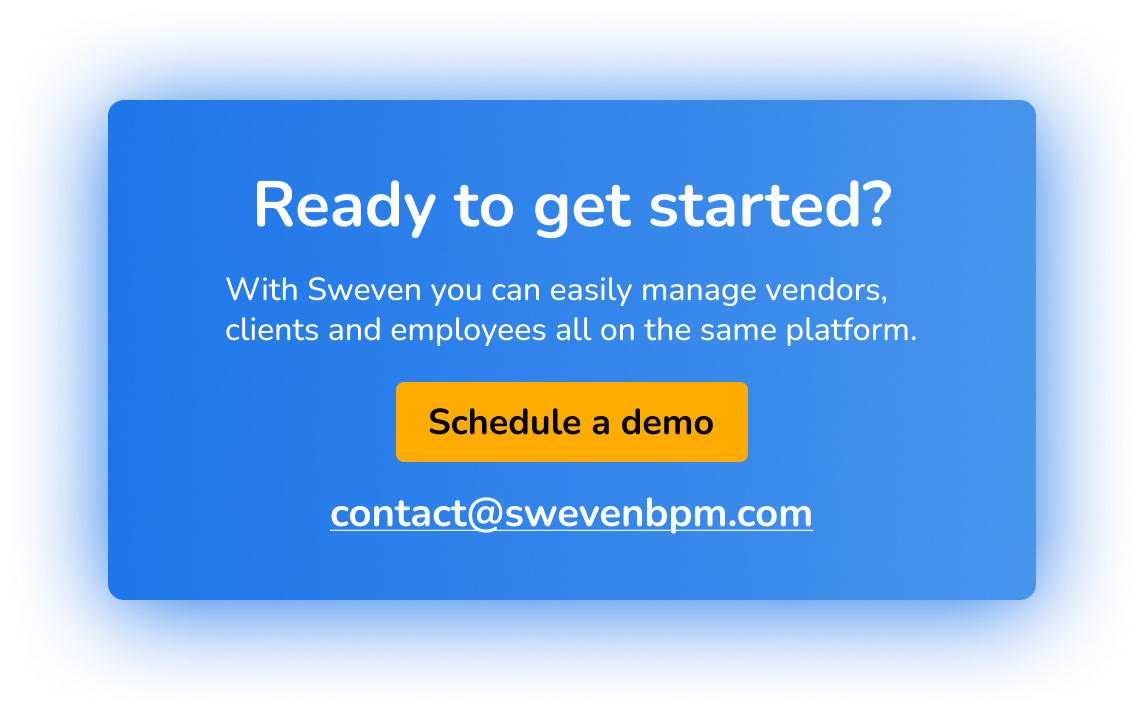In today’s interconnected global economy, supply chain disruptions can strike at any moment, wreaking havoc on a business’s ability to deliver goods or services promptly. Events like natural disasters, geopolitical conflicts, and disruptions in the supply chain are not uncommon. However, proactive measures can be taken to mitigate their impact on vendor performance. This blog post explores the challenges of supply chain disruptions and outlines a comprehensive Supply Chain Risk Management (SCRM) strategy to help businesses maintain vendor performance even in the face of adversity.

The Impact of Supply Chain Disruptions:
Supply chain disruptions can have far-reaching consequences for businesses. Some of the key challenges include:
- Delayed Deliveries: Disruptions can lead to delays in receiving essential supplies, impacting production schedules and customer deliveries.
- Operational Hiccups: Interruptions in the supply chain can result in operational inefficiencies, increased costs, and reduced overall productivity.
- Customer Dissatisfaction: Failing to meet customer expectations due to supply chain disruptions can lead to customer dissatisfaction and potential loss of business.
The Solution: A Comprehensive SCRM Strategy:
To mitigate the impact of supply chain disruptions on vendor performance, businesses should implement a well-thought-out Supply Chain Risk Management (SCRM) strategy. Here are the key components of such a strategy:
1. Supplier Diversification:
Relying on a single supplier can be risky. Diversify your vendor base to reduce dependency on a single source. This ensures that you have backup options if one vendor encounters difficulties.
2. Supply Chain Visibility:
Maintain real-time visibility into your supply chain. This involves tracking inventory levels, monitoring supplier performance, and staying informed about potential disruptions in the market.
3. Contingency Planning:
Develop comprehensive contingency plans to address various types of disruptions. These plans should outline steps to take in the event of a crisis and how to activate backup suppliers or logistics routes.
4. Communication with Vendors:
Foster open and transparent communication with your vendors. Ensure that they are aware of your expectations and your SCRM plans. Collaborate with vendors to find solutions when disruptions occur.
5. Inventory Management:
Strategically manage your inventory levels. Maintaining a buffer stock of critical items can help tide over disruptions without major disruptions to your operations.
6. Ongoing Risk Assessments:
Continuously assess the risk profiles of your vendors. Understand their vulnerabilities and have mitigation plans in place for each vendor.
7. Supply Chain Insurance:
Consider supply chain insurance options to protect against financial losses due to disruptions. These policies can help cover additional costs incurred during a disruption.
–
Supply chain disruptions are inevitable, but they don’t have to paralyze your business. By implementing a comprehensive SCRM strategy that includes supplier diversification, supply chain visibility, contingency planning, open communication, inventory management, risk assessments, and insurance options, you can fortify your business against unforeseen events. This proactive approach not only minimizes operational disruptions but also enhances your overall resilience in an unpredictable business environment. Remember, the key to success in managing vendor performance during disruptions is preparation and adaptability.

























